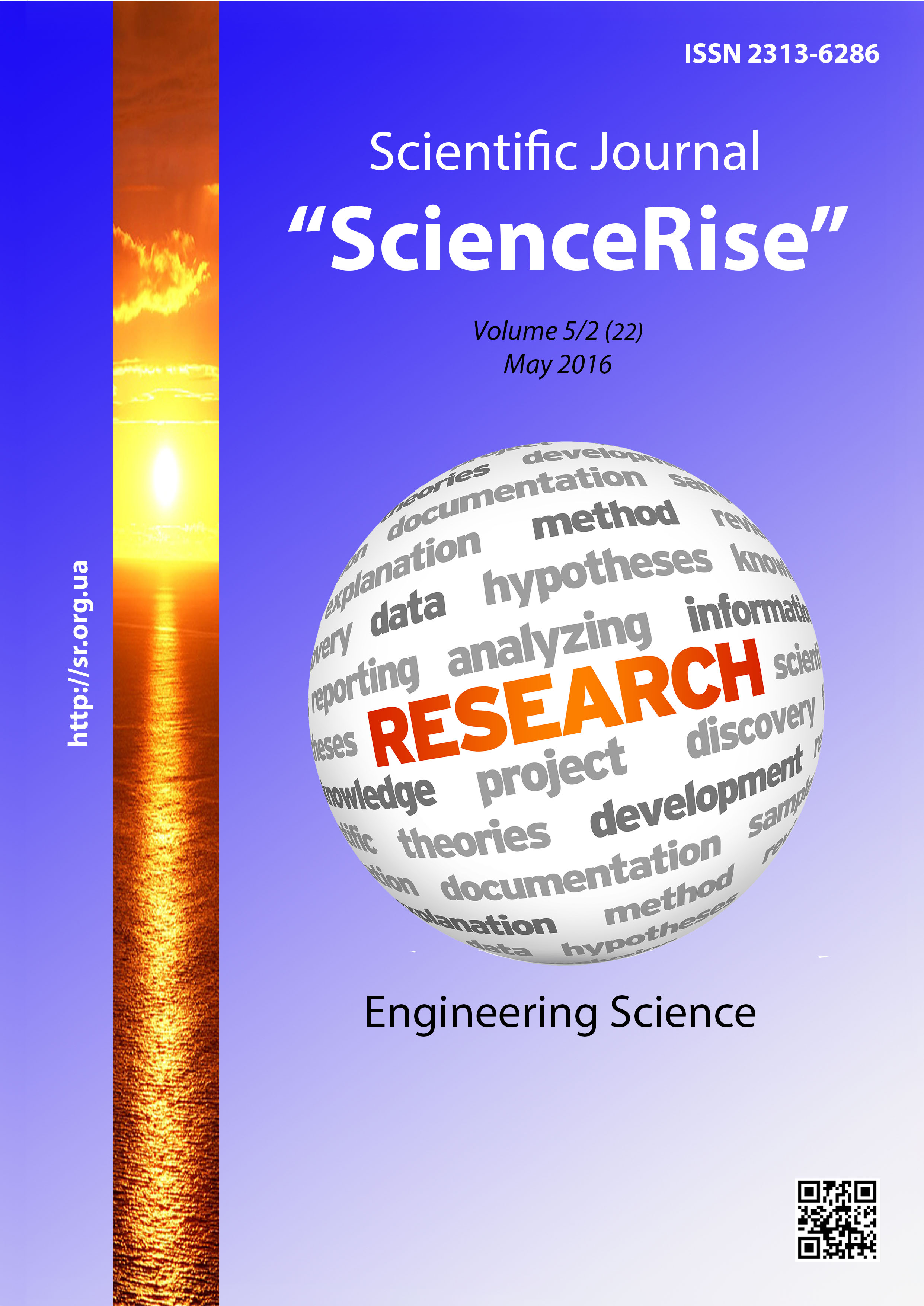Видалення сінтетичних барвників зі стічних вод
DOI:
https://doi.org/10.15587/2313-8416.2016.69476Ключові слова:
барвник, флотоекстракція, поверхнево-активні речовини, стічні води, бенгальський рожевий, гексатриметиламоній бромідАнотація
Проаналізовано сучасний стан проблеми забруднення стічних вод барвниками, розглянуто існуючі методи вилучення і деструкції барвників. В якості альтернативної запропонована технологія флотоекстракції. Досліджено закономірності видалення барвника бенгальського рожевого з модельних розчинів за допомогою метода флотоекстракції. На основі проведених експериментів встановлено вплив рН середовища, тривалості процесу, мольного співвідношення реагуючих речовин та визначені раціональні умови проведення флотоекстракції
Посилання
Nesterova, L. A., Saribekov, G. S. (2010). Efficiency of use of turnaround systems of water consumption at the textile enterprises. Eastern-European Journal of Enterprise Technologies, 4/8 (46), 25–28. Available at: http://journals.uran.ua/eejet/article/view/3022
Forgacs, E., Cserháti, T., Oros, G. (2004). Removal of synthetic dyes from wastewaters: a review. Environment International, 30 (7), 953–971. doi: 10.1016/j.envint.2004.02.001
Golman, А. М. (1982). Ionnaya flotatciya. Moscow: Nedra, 144.
Lu, Y., Zhu, X. (2001). Solvent sublation: theory and application. Separation & Purification Reviews, 30 (2), 157–189. doi: 10.1081/spm-100108158
Bi, P., Dong, H., Dong, J. (2010). The recent progress of solvent sublation. Journal of Chromatography A, 1217 (16), 2716–2725. doi: 10.1016/j.chroma.2009.11.020
Caragay, A. B., Karger, B. L. (1966). Use of Rate Phenomena in Solvent Sublation. Separation of Methyl Orange and Rhodamine B. Analytical Chemistry, 38 (4), 652–654. doi: 10.1021/ac60236a040
Horng, J. Y., Huang, S. D. (1993). Removal of organic dye (direct blue) from synthetic wastewater by adsorptive bubble separation techniques. Environmental Science & Technology, 27 (6), 1169–1175. doi: 10.1021/es00043a017
Lu, Y., Wang, Y., Zhu, X. (2001). The removal of bromophenol blue from water by solvent sublation. Separation Science and Technology, 36 (16), 3763–3776. doi: 10.1081/ss-100108361
Lu, Y., Zhu, X., Peng, Y. (2003). The Removal of Methyl Violet from Water by Solvent Sublation. Separation Science and Technology, 38 (6), 1385–1398. doi: 10.1081/ss-120018815
Lu, Y., Wei, B., Wang, Y., Li, J. (2007). Studies on the Removal of Bromocresol Green from Water by Solvent Sublation. Separation Science and Technology, 42 (8), 1901–1911. doi: 10.1080/01496390601174398
Lu, Y., Wang, Y., Xiong, Y., Zhu, X. (2001). The kinetics and thermodynamics of surfactants in solvent sublation. Fresenius’ Journal of Analytical Chemistry, 370 (8), 1071–1076. doi: 10.1007/s002160100914
Obushenko, T. I., Astrelin, I. M., Tolstopalova, N. M., Varbanets, M. A., Kondratenko, T. A. (2008). Wastewater Treatment from Toxic Metals by Flotoextraction. Journal of Water Chemistry and Technology, 30 (4), 241–245.
Bi, P. Y., Dong, H. R., Wang, N. N. (2007). Critical bubble radius in solvent sublation. Chinese Chemical Letters, 18 (10), 1293–1296. doi: 10.1016/j.cclet.2007.08.009
Astrelin, I. M., Obushenko, T. I., Tolstopalova, N. M., Тargonska, О. О. (2013). Theoretical principles and application of solvent sublation: a review. Voda i vodoochysni tehnologii', 3, 3–23.
##submission.downloads##
Опубліковано
Номер
Розділ
Ліцензія
Авторське право (c) 2016 Тетяна Іванівна Обушенко, Наталія Михайлівна Толстопалова, Ігор Михайлович Астрелін

Ця робота ліцензується відповідно до Creative Commons Attribution 4.0 International License.
Наше видання використовує положення про авторські права Creative Commons CC BY для журналів відкритого доступу.
Автори, які публікуються у цьому журналі, погоджуються з наступними умовами:
1. Автори залишають за собою право на авторство своєї роботи та передають журналу право першої публікації цієї роботи на умовах ліцензії Creative Commons CC BY, котра дозволяє іншим особам вільно розповсюджувати опубліковану роботу з обов'язковим посиланням на авторів оригінальної роботи та першу публікацію роботи у цьому журналі.
2. Автори мають право укладати самостійні додаткові угоди щодо неексклюзивного розповсюдження роботи у тому вигляді, в якому вона була опублікована цим журналом (наприклад, розміщувати роботу в електронному сховищі установи або публікувати у складі монографії), за умови збереження посилання на першу публікацію роботи у цьому журналі.

